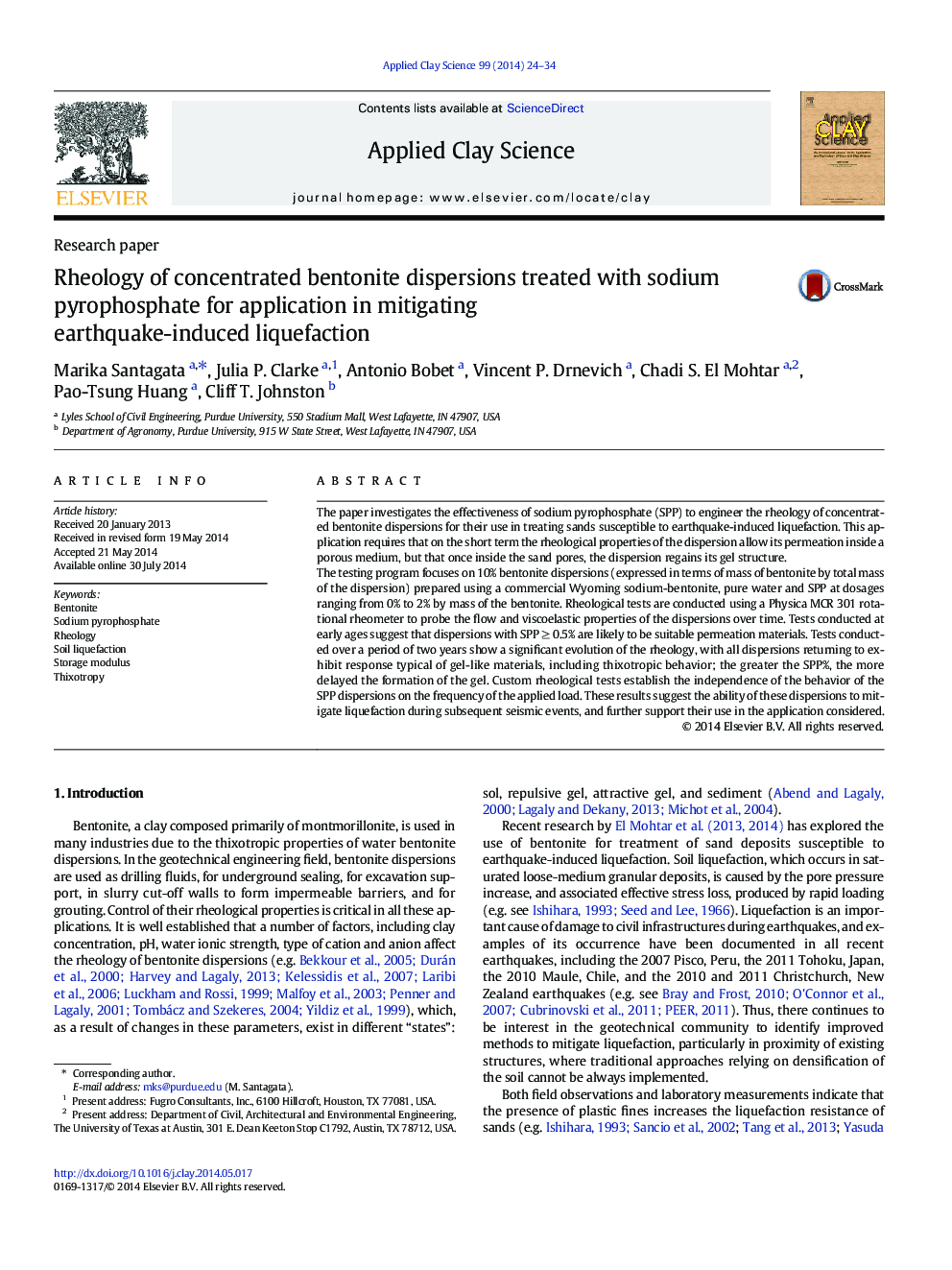| کد مقاله | کد نشریه | سال انتشار | مقاله انگلیسی | نسخه تمام متن |
|---|---|---|---|---|
| 1694730 | 1519079 | 2014 | 11 صفحه PDF | دانلود رایگان |
• The use of bentonite dispersions for treating liquefiable sands is explored.
• The rheology of bentonite dispersions is engineered using sodium pyrophosphate.
• At early ages SPP breaks down the gel structure of concentrated bentonite dispersions.
• With time the dispersions return to exhibit a response typical of gels.
• Rheological tests support the use of bentonite for liquefaction resistance.
The paper investigates the effectiveness of sodium pyrophosphate (SPP) to engineer the rheology of concentrated bentonite dispersions for their use in treating sands susceptible to earthquake-induced liquefaction. This application requires that on the short term the rheological properties of the dispersion allow its permeation inside a porous medium, but that once inside the sand pores, the dispersion regains its gel structure.The testing program focuses on 10% bentonite dispersions (expressed in terms of mass of bentonite by total mass of the dispersion) prepared using a commercial Wyoming sodium-bentonite, pure water and SPP at dosages ranging from 0% to 2% by mass of the bentonite. Rheological tests are conducted using a Physica MCR 301 rotational rheometer to probe the flow and viscoelastic properties of the dispersions over time. Tests conducted at early ages suggest that dispersions with SPP ≥ 0.5% are likely to be suitable permeation materials. Tests conducted over a period of two years show a significant evolution of the rheology, with all dispersions returning to exhibit response typical of gel-like materials, including thixotropic behavior; the greater the SPP%, the more delayed the formation of the gel. Custom rheological tests establish the independence of the behavior of the SPP dispersions on the frequency of the applied load. These results suggest the ability of these dispersions to mitigate liquefaction during subsequent seismic events, and further support their use in the application considered.
Figure optionsDownload as PowerPoint slide
Journal: Applied Clay Science - Volume 99, September 2014, Pages 24–34
